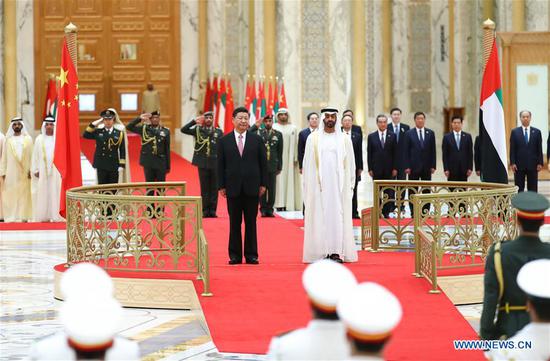Expert says new enforcement rules for asset management products further clarify standards
The timely move by China's top financial regulators to introduce policies for the strictest-ever asset management products is expected to ease financial institutions' concerns and stabilize market sentiment.
Under the detailed enforcement rules, financial institutions could take a breather since they still have space and time to withdraw from some transactions, instead of facing a sudden break on all high-leverage financing instruments.
It is an attempt by the regulators to pacify participants and ensure there is no sharp break in financial chains, according to experts.
The People's Bank of China, the central bank, issued a policy explanation on its website late on Friday, together with another two sets of further detailed enforcement rules from the country's top regulators for the banking, insurance and securities sectors.
The detailed rules, which are designed on the basis of the framework and philosophy of the country's first unified guidelines for asset management products in April, clarified that publicly-issued products can still invest in some high-risk nonstandard credit assets, and players are allowed to issue "old products" to invest in "new products" during the transition period, in order to maintain necessary liquidity and market stability.
"The detailed guidelines have not changed the tendency of financial deleveraging, but further clarify regulatory standards, which could ease the market's pessimistic expectations," said Huang Yiping, deputy head of the National School of Development at Peking University, and a former member of the central bank's monetary policy committee.
Gao Chong, vice-general manager of the asset management department of Industrial and Commercial Bank of China, said that the new policies will help to stabilize investors' expectations on both the equity and bond markets, and ease some debt defaults in the second half.
After a five-month public discussion and rounds of policy revision on the draft, and also a period filled with financial institutions' lobbying for some easing, the central bank issued the final version of guidelines on standardizing asset management businesses of financial institutions on April 27.
"Financial institutions, especially some commercial banks, became hesitant or overreacted to the tightened regulations, thus they suspended part of their financing activities and stopped large-scale investment in nonstandard credit assets already-one of the reasons that led to the current liquidity pressure," said Wei Xing, an expert in asset management products with a domestic securities company.
To give financial institutions sufficient time to adjust business models and prevent sharp market vulnerability, a transition period was set until the end of 2020. It has already been extended by two more years from the draft date.
The measures do not alter the initial targets to curb less-regulated and high-leveraged financing activities, or the so-called shadow banking businesses, including interbank and trust investments.
The unexpected market reaction and financial institutions' overcautious appetite for risks could be mainly reflected by a remarkable retreat of money supply and total social financing growth in the first half this year, as some financial channels have been blocked.
By the end of 2017, said the central bank, the total size of the asset management business had reached 100 trillion yuan ($14.80 trillion) in China, and the outstanding value of off-balance sheet bank wealth management products reached 22.2 trillion yuan.
Around 42.19 percent of the WMPs have been invested into the bond market and 16.22 percent in nonstandard credit assets, such as trust loans and acceptance bills, according to an official report.


















































